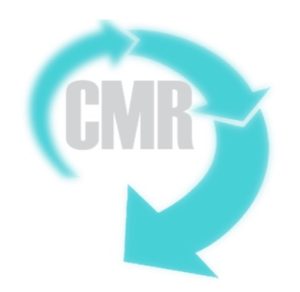CMA’s Nordin Award recipients named
CMR Staff Reports
College Media Review has awarded Patrick Howe and Brady Teufel of California Polytechnic State University, San Luis Obispo, the 2019 Ken Nordin Award, which recognizes the top college media research publication appearing in College Media Review.
 The paper, “The Best Medium for the Story: A Case Study of Integrated Student Media” was published in volume 56 of the 2019 College Media Review Research Annual. The award was chosen based on a panel of CMR Associate Editor Lillian Lodge Kopenhaver, CMA Research Chair Elizabeth Smith and CMR Editor Lisa Lyon Payne.
The paper, “The Best Medium for the Story: A Case Study of Integrated Student Media” was published in volume 56 of the 2019 College Media Review Research Annual. The award was chosen based on a panel of CMR Associate Editor Lillian Lodge Kopenhaver, CMA Research Chair Elizabeth Smith and CMR Editor Lisa Lyon Payne.
In the annual, Kopenhaver included an editor’s note that commends the authors for conceiving new models to ensure the best possible learning laboratory for achievement in student media. The 2019 CMR Research Annual, which compiles the publications in a bound annual volume, is available for purchase through the CMR Bookstore.
An editor’s note, describing the significance of the three published papers in this year’s annual, appears below:
College student media operations have always provided opportunities for student journalists to learn the tools of the trade, looking forward to careers in the professional world. Having student media experience serves as a “gold star” on resumes when prospective employers seek to hire aspiring journalists. Those prospective employers know that applicants have had advisers who have trained them and encouraged their talents and creativity, providing them with the best possible environment in which to learn and practice the craft. Student media operations are also a crucible for new trends and experimentation to produce better campus media and better journalism.
Patrick Howe and Brady Teufel, California Polytechnic State University, San Luis Obispo, in their article in this issue of College Media Review, “The Best Medium for the Story: A Case Study of Integrated Student Media,” describe one of these new trends, a complete makeover of their student media operation to ensure the best possible laboratory for student achievement. Through a broad collaboration of students, staff and faculty, which, in their words, “aimed to overhaul traditional labels, duties and cultural distinctions, and combine all student media into one digitally oriented operation, while still retaining all the original outlets,” the authors discuss their process through a case study and provide guidelines for others to consider as they evaluate their own media operations and think about new models for the newsroom.
Carol Terracina Hartman, Lock Haven University of Pennsylvania, and Robert G. Nulph, Missouri Western State University, selected the top 20 award-winning college and university student media programs to analyze the “communication practices and messages of universities and academic departments that promote these top college media outlets using social media tools.” Their goal is to provide a view of how these programs promote successes and honors of student media and use those factors to create visibility for the student media as part of their program and as a tool to recruit students. Their study examines the type of communication utilized, as well as what is communicated and when that communication occurs.
Journalistic accuracy and ethical reporting is always a top issue at student media operations as students learn the tenets of responsible newsgathering. In her article, “Plagiarism in College Media: Is plagiarism a problem? Is there a solution?,” Carolyn Schurr Levin, Long Island University, has studied the issue at the top of every journalism teacher’s list: plagiarism. She asserts, correctly so, that “one of the only points that college media advisers seem to agree upon is that plagiarism is rampant on campus.” Her goal was to discover “how common plagiarism is at student newspapers and what those newspapers do to prevent it, including what plagiarism training is provided, if any.”
College media operations seek to mirror the professional world as best they can. But students are learning and advisers are providing the best guidance possible to encourage them and hone their skills. The authors in this issue of College Media Review offer ideas for advisers to ponder as they commence a new academic year.
Lillian Lodge Kopenhaver, College Media Review Associate Editor
